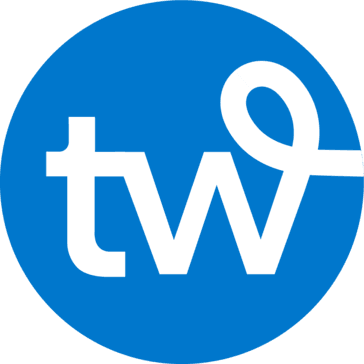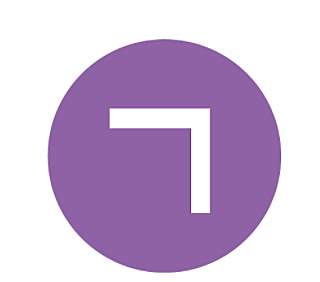Choosing the right social media management tool is like picking the perfect running shoes for a marathon. You need something that fits just right, supports your pace, and helps you cross the finish line with flying colors. In the vast landscape of social media tools, two names often pop up: Tailwind and Social Report. But which one is the best fit for you? Let’s dive in and compare these two contenders, focusing on one key area at a time to help you make an informed decision.
| Tail wind | Social Report |
|---|---|
 |  |
| G2 Score – 4.3 out of 5 stars | G2 Score – 4.4 out of 5 stars |
| TrustRadius Score – 6.8 out of 10 stars | TrustRadius Score – 7.8 out of 10 stars |
Ease of Use and User Interface
When it comes to managing social media, the last thing you need is a tool that’s as complicated as deciphering ancient hieroglyphics. You want something that’s intuitive, easy to navigate, and makes your daily tasks feel like a breeze. Here’s how Tailwind and Social Report stack up in terms of user experience.
Tailwind:
Tailwind is like the friendly neighbor who always has your back. It specializes in Pinterest and Instagram, two platforms known for their visual appeal. The interface is bright, cheerful, and straightforward, making it inviting for new users. Tailwind’s dashboard is a hub of functionality, where you can schedule posts, analyze performance, and discover content ideas all in one place.
One of the standout features of Tailwind is its drag-and-drop calendar. It simplifies the scheduling process, allowing you to visually plan your content calendar with ease. Plus, Tailwind offers Tailwind Create, a tool that lets you design pins quickly. It’s a godsend for those who want to maintain an active presence on Pinterest but don’t have the time or skills to create fresh, engaging content daily.
Social Report:
On the flip side, Social Report is like the Swiss Army knife of social media tools. It supports a wider range of platforms, including the usual suspects like Facebook, Twitter, Instagram, and LinkedIn, along with some unexpected ones like Google My Business and Tumblr. This breadth of support makes Social Report an attractive option for businesses with a presence across multiple channels.
Social Report’s interface is clean and professional, with a focus on data. It offers a comprehensive suite of analytics and reporting features that can make a data nerd’s heart sing. However, this focus on data can be a double-edged sword. New users might find the platform a bit overwhelming at first glance, with its plethora of charts, graphs, and metrics.
The scheduling tool is robust, offering flexibility in planning your content across different platforms. However, it doesn’t have the same visual appeal as Tailwind’s drag-and-drop calendar. It’s more about functionality than aesthetics, which might appeal to users who prioritize depth of features over ease of use.
The Verdict:
If you’re a visual content creator focusing on Pinterest and Instagram, Tailwind’s user-friendly interface and creative tools like Tailwind Create make it a clear winner. It’s designed to make your life easier, letting you focus on creating and sharing stunning visual content.
However, if your social media strategy spans multiple platforms and you crave deep analytics to guide your decisions, Social Report offers the comprehensive features you need. Its learning curve is steeper, but for data-driven marketers, the insights it provides can be invaluable.
Analytics and Reporting
A critical aspect of any social media strategy is understanding how your content performs. Without insights into what works and what doesn’t, you’re essentially flying blind. Let’s compare Tailwind and Social Report in the realm of analytics and reporting, to see which one might give you the clearer vision needed to navigate the skies of social media success.
Tailwind:
Tailwind shines when it comes to analytics for Pinterest and Instagram. Its dashboard provides a wealth of information at a glance, offering insights into your account’s growth, engagement rates, and the performance of individual posts. For Pinterest, you can see how your pins perform over time, which boards are most engaging, and even how your pinning frequency affects your overall account performance. Instagram users will appreciate the profile and post insights, hashtag analysis, and the ability to track follower growth.
One of Tailwind’s most beloved features is its Smart Insights. These recommendations can help you identify the best times to post, suggest hashtags to increase your reach, and give you tips on improving your content strategy. These actionable insights are not just numbers on a screen; they’re tailored suggestions that can directly influence your social media tactics.
Social Report:
Social Report takes analytics to another level, offering detailed reporting across more social media platforms. Its strength lies in the ability to aggregate data from all your social accounts into comprehensive reports. You can track everything from basic metrics like engagement and follower growth to more nuanced data such as audience demographics and optimal posting times across platforms.
What sets Social Report apart is its ability to customize reports. You can tailor your analytics to focus on the metrics that matter most to you, making it easier to present data to stakeholders or refine your strategy based on specific goals. The platform also offers the convenience of scheduling reports to be automatically generated and sent to your email, saving you time and ensuring you always have the latest data at your fingertips.
The Verdict:
If your primary focus is on Pinterest and Instagram, Tailwind provides all the analytics you need with an added layer of user-friendly insights and recommendations to enhance your strategy. Its visual-centric approach aligns perfectly with the nature of these platforms, making it a seamless fit for content creators and businesses alike.
For those with a broader social media presence, Social Report’s comprehensive and customizable analytics offer a deeper dive into your performance across various platforms. Its ability to consolidate data into one unified report is invaluable for marketers managing multiple accounts, providing a holistic view of their social media landscape.
Content Discovery and Scheduling
Creating and maintaining a dynamic social media presence requires a constant stream of fresh content. Both Tailwind and Social Report offer features to help you discover new content ideas and schedule your posts for optimal engagement. Let’s dive into how each platform handles content discovery and scheduling, and which might better serve your needs.
Tailwind:
Tailwind offers robust tools specifically designed for Pinterest and Instagram, two platforms where visual content reigns supreme. For Pinterest, Tailwind’s content discovery comes in the form of Tailwind Tribes (now known as Tailwind Communities). These communities allow you to connect with other creators in your niche, share your content, and find high-quality pins to republish on your boards. It’s a collaborative ecosystem that fosters growth and engagement by leveraging the power of community.
For Instagram, Tailwind provides a hashtag finder, which suggests relevant hashtags as you draft your posts, increasing your content’s discoverability. Moreover, Tailwind’s SmartSchedule picks the best times for you to post based on when your audience is most active, taking the guesswork out of scheduling.
The scheduling interface in Tailwind is user-friendly, with a drag-and-drop calendar that makes planning your content strategy straightforward. The ability to bulk schedule posts, along with features like automatic posting and interval scheduling (for Pinterest), makes Tailwind a powerful ally in managing your social media workflow efficiently.
Social Report:
Social Report, on the other hand, offers a broader approach to content discovery and scheduling, supporting a wide array of social media platforms. Its content discovery tool allows you to search for content based on keywords, making it easier to find relevant articles, images, and videos across the web. This can be particularly useful for platforms like Facebook, Twitter, and LinkedIn, where sharing a mix of original and curated content can drive engagement.
The scheduling capabilities of Social Report are comprehensive. You can queue up content for all your social accounts from a single dashboard, customize posts for each platform, and use the SmartSchedule feature to automatically post at the best times. Social Report also offers the ability to recycle evergreen content, ensuring your top-performing posts get the attention they deserve over time.
The Verdict:
If your focus is on mastering Pinterest and Instagram, Tailwind’s specialized tools for content discovery and scheduling are unmatched. The platform’s visual-centric features, such as Tailwind Communities and the hashtag finder, are tailored to the unique demands of these platforms, making it easier to grow your reach and engagement.
For those managing a diverse social media portfolio, Social Report’s broad platform support and advanced scheduling options make it a versatile tool. Its content discovery features are geared towards finding a wide range of content types across the internet, ideal for businesses looking to maintain an active presence across several social networks.
Ultimately, the choice between Tailwind and Social Report for content discovery and scheduling will depend on where your audience is most active and the type of content you produce. Tailwind is the go-to for visually driven platforms, while Social Report offers a one-size-fits-all solution for a more varied social media strategy.
Integration and Collaboration Features
In the fast-paced world of social media, being able to integrate seamlessly with other tools and collaborate effectively with your team can make a significant difference in your strategy’s success. Let’s explore how Tailwind and Social Report stack up in terms of integration capabilities and collaboration features, helping you determine which platform might best suit your workflow needs.
Tailwind:
Tailwind’s integrations are primarily focused on enhancing its core functionalities for Pinterest and Instagram. For example, it integrates with Canva, allowing users to design graphics directly within the Tailwind interface, streamlining the content creation process. However, Tailwind’s integration options beyond these core features are somewhat limited compared to broader social media management tools.
When it comes to collaboration, Tailwind offers team features that allow you to invite members to join your account, making it easier to manage and schedule content together. These features are particularly useful for small teams and agencies focusing on visual content creation for Pinterest and Instagram. Tailwind’s workflow is designed to simplify approval processes and content planning within its specialized scope, although it may not offer the same level of detailed role customization and workflow management as more comprehensive tools.
Social Report:
Social Report, being a more comprehensive social media management platform, boasts a wider array of integrations with third-party tools. It integrates with platforms like Google Analytics, giving you a deeper understanding of how your social media efforts are driving traffic to your website. Additionally, Social Report supports integrations with content management systems, customer relationship management (CRM) tools, and more, making it a more flexible solution for businesses looking to connect their social media activities with other digital marketing efforts.
Collaboration in Social Report is built for teams of all sizes. It offers detailed role assignments and permissions, enabling you to control who can create, approve, and publish content. This is especially beneficial for larger organizations or agencies managing multiple client accounts, as it ensures a smooth workflow and keeps your content strategy on track without compromising security or brand consistency.
The Verdict:
If your social media strategy revolves around Pinterest and Instagram, and you’re looking for a tool that integrates well with content creation platforms like Canva, Tailwind is your best bet. Its collaboration features, although not as extensive as some might wish, are sufficient for smaller teams focusing on these visual platforms.
On the other hand, if you’re in need of a tool that offers a wide range of integrations with other digital marketing tools and provides robust collaboration features for larger teams, Social Report is the way to go. Its ability to integrate with analytics, CRM systems, and more, along with its comprehensive role and permission settings, make it a superior choice for businesses or agencies managing a broad social media presence across multiple platforms.
Choosing between Tailwind and Social Report for integration and collaboration will largely depend on the scale of your operations and the specific platforms you’re focusing on. Tailwind offers a streamlined, visually focused toolset, while Social Report delivers a more expansive, team-oriented platform suitable for a diverse digital marketing strategy.
Conclusion
Tailwind is the clear choice for businesses and content creators who focus predominantly on Pinterest and Instagram. Its user-friendly interface, specialized analytics, and innovative features like Tailwind Create and Tailwind Communities cater specifically to the needs of visual content creators. Tailwind simplifies the process of creating, scheduling, and analyzing content, making it easier to grow your presence on these platforms.
Social Report, on the other hand, offers a more comprehensive solution suitable for businesses and agencies managing a broader range of social media platforms. Its extensive analytics, customizable reporting, wide array of integrations, and robust collaboration features make it ideal for those who need a more versatile tool. Social Report’s ability to consolidate data from various platforms into a unified dashboard is invaluable for data-driven decision-making and streamlining workflow across larger teams.





















